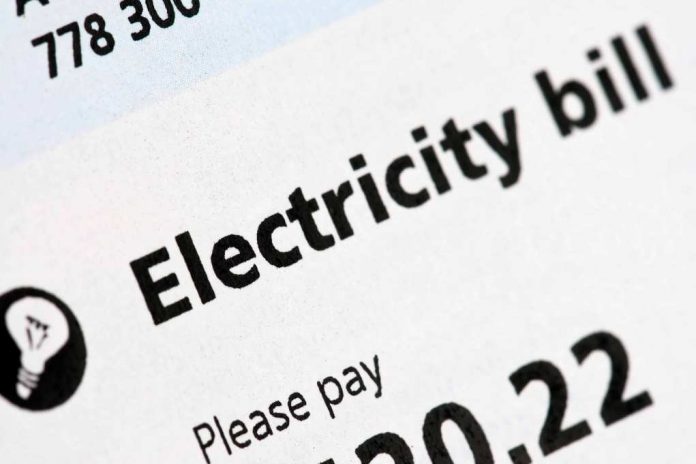Dealing with bills is difficult for many people in the U.S. If you are struggling with paying bills, you are not alone! The federal government created the Low Income Home Energy Assistance Program (LIHEAP). Many folks do not know about this program, however, this article can provide some useful information on this program and guide you in the right direction if you want to take advantage of it!
What is the Low Income Home Energy Assistance Program (LIHEAP)?
LIHEAP is a government program that aims to assist qualified low-income Americans. The United States Department of Health and Human Services (HHS) is in charge of this assistance program. However, the management and administration of the program is the responsibility of local and state LIHEAP offices. This program can help people who qualify with:
- Payment of bills
- The cost of energy used towards heating
- The cost of energy used towards cooling
- Energy-related home repairs
- Assistance with the energy crisis
Keep in mind this program does not normally assist with water or sewer bills. There may, however, be exceptions. When water is used for air conditioning, for instance, that might be an exception. In this scenario, LIHEAP funding could be used to pay water bills.
Who is Eligible for LIHEAP?
It should be clear that this program is not for everyone to benefit from. Instead, only individuals who meet certain criteria are eligible for assistance. There are multiple ways in which a person may be able to qualify for LIHEAP. A person, for example, may automatically qualify for LIHEAP if they also participate in other government programs such as:
- TANF (Temporary Assistance for Needy Families)
- SNAP (Supplemental Nutrition Assistance Program)
- SSI (Supplemental Security Income)
You can qualify even if you are not a participant in any of the qualifying programs. You only need to make sure that you meet other eligibility criteria. This includes making sure that your income is not too high. You must keep your annual household income within certain limitations. It is critical to keep in mind that the following limits apply are pre-tax income:
- $21,870 is the maximum yearly income for a one-person household.
- $29,580 is the maximum yearly income for a two-person household.
- $37,290 is the maximum yearly income for a three-person household.
- $45,000 is the maximum yearly income for a four-person household.
- $52,710 is the maximum yearly income for a five-person household.
- $60,420 is the maximum yearly income for a six-person household.
- $68,130 is the maximum yearly income for a seven-person household.
- $75,840 is the maximum yearly income for an eight-person household.
- An extra $7,710 per additional person is available for households with more than 8 members.
While the list above is a fantastic place to start when it comes to information, you should check with the managing agency of this program in your locality to ensure you have the most correct and up-to-date information.
How Do I Get LIHEAP?
Each state will have a different application process if you want to participate in this program. For further details, you should get in touch with your local LIHEAP office. You can also get in touch with the LIHEAP office in your state if you are having trouble reaching someone at your local LIHEAP office.
Questions and Answers About LIHEAP
People usually have questions when they hear about a support program. These frequently asked questions could provide you with some context if you are in the same situation.
Can LIHEAP Cover the Full Cost of Your Utility Bill?
This program most likely will not be able to cover all of your energy bills. That is because LIHEAP was never intended to do so. Generally, consumers can only receive assistance from their main heating source. Therefore, if gas was your main source of heating, this program might be able to assist with your gas bill but not your electricity bill.
How Can LIHEAP Save On Your Future Energy Bills?
This program might be able to assist beneficiaries cut their energy costs in the future through energy-related home repairs (also known as weatherization). The following are some typical repairs:
- Repairing leaky doors
- Installing insulation
- Repairing leaky windows
- Repairing damaged or inefficient heating and cooling systems
- Replacing malfunctioning or insufficient heating and cooling systems
Other Programs That Might Help
Other than LIHEAP, other programs may be able to help. We will talk about some of the programs that could make you immediately eligible for LIHEAP. These kinds of programs include:
- Temporary Assistance for Needy Families (TANF)
- Supplemental Nutrition Assistance Program (SNAP)
- Supplemental Security Income (SSI)
Temporary Assistance for Needy Families (TANF)
The states and territories that participate in this program receive funding to run their own versions of it. No matter where the program is located, its objective is to assist low-income families with children achieve economic self-sufficiency. It is able to help with this goal by providing financial aid, child care assistance, employment assistance, and other forms of support.
Supplemental Nutrition Assistance Program (SNAP)
People frequently struggle with the expenses of groceries every day. For this reason, the government also provides this opportunity for assistance with getting food. Recipients who meet the requirements can get an Electronic Benefit Transfer (EBT) card through SNAP. This card will get funds each month that can be used to purchase eligible foods at stores that accept these cards as payment.
Supplemental Security Income (SSI)
Those who meet the program’s requirements, who may have little or no income/resources, may get assistance. This applies to those with disabilities, people who are blind, or seniors. The assistance provided by this program can include financial aid to give beneficiaries enough money to pay for necessities like food, housing, and clothing.
In Conclusion
You have a wide range of options to think about when it comes to different opportunities of support. The Low Income Home Energy Assistance Program (LIHEAP) is one of those options. With the aid of this program, beneficiaries may be eligible for:
- Payment of bills
- The cost of energy used towards heating
- The cost of energy used towards cooling
- Energy-related home repairs
- Assistance with the energy crisis
You must contact the LIHEAP office in your immediate area if you are interested in this program. If you are having trouble contacting that office, you can get in touch with the LIHEAP office in your state. It is critical to remember that each state will have different requirements for the application process, rules, program eligibility, and other things. You might be eligible for benefits from programs other than LIHEAP such as:
- TANF (Temporary Assistance for Needy Families)
- SNAP (Supplemental Nutrition Assistance Program)
- SSI (Supplemental Security Income)
You just need to know where to start looking to find support possibilities to consider!














